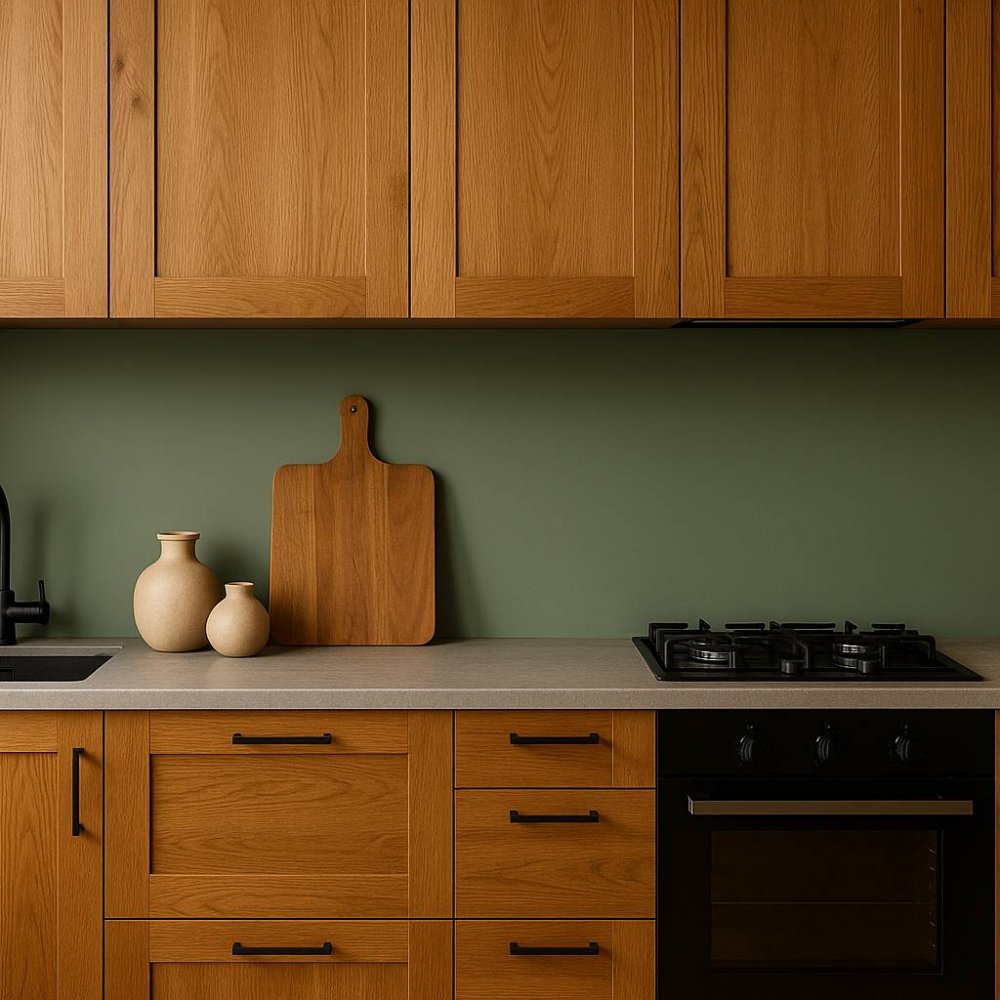Wooden kitchens are a timeless choice that combines warmth, natural texture, and elegance. From rustic and farmhouse styles to modern, minimalist lines, wooden surfaces add character and quality to one of the most used spaces in the home. However, the right wall color can either elevate or diminish this effect.
1. White – The safe, bright foundation
White walls are the classic choice to highlight any type of wood. They enhance its natural tone and brighten the space—especially helpful if your kitchen lacks natural light. White pairs perfectly with oak, walnut, and ash wood. If your kitchen already includes many dark wood elements, white acts as a balancing contrast.
Best for: Small spaces, minimalist aesthetics, dark wood kitchens.
2. Gray – Elegance and balance
Gray, whether light or deep, works beautifully with light woods like birch or pine. It creates a modern and calm atmosphere without drawing attention away from the wood elements. Darker gray tones add depth to a light kitchen—as long as lighting is sufficient.
Best for: Modern style, combinations with metal finishes (e.g., stainless steel).
3. Dusty Blue or Misty Blue – Freshness with finesse
Soft blues such as “dusty blue” or “misty blue” bring freshness and elegance. They work particularly well with mid-tone woods and add visual interest without overpowering the wooden presence. It’s a great alternative if you want to avoid white but still keep the room bright.
Best for: Classic kitchens with natural wood, coastal-inspired interiors.
4. Beige, warm gray, or greige – Natural harmony
Greige, a mix of gray and beige, is the ultimate neutral for kitchens with natural wood. It doesn’t compete with the material, doesn’t weigh down the space, and blends beautifully with honey-toned or light wood. It creates a calm, earthy ambiance and serves as a great base for bolder accents.
Best for: Scandinavian, organic, or Japandi-style kitchens.
5. Dark Green or Olive – Bold but beautiful
For nature lovers and fans of deep tones, a dark green (like forest green or olive) creates a striking contrast with wood. It pairs best with walnut, teak, and other rich, dark woods. Provided there's adequate lighting and balanced decor, the result is luxurious and inviting.
Best for: Statement kitchens, cottage or mid-century styles.
Extra Tips for Enhanced Results
-
Lighting: The darker the wood, the more lighting (natural or artificial) the space will need.
-
Contrast: If your wooden kitchen has a lot of texture (e.g., rustic), opt for matte walls to avoid visual “clashing.”
-
Modern vs. traditional: Cooler neutrals offer a modern feel; earthy tones lean more traditional.
Choosing your kitchen wall color isn’t just a matter of taste — it’s about finding balance with the wood grain, lighting orientation, and the personality of your space. The ideal color is the one that highlights the natural beauty of the wood and blends seamlessly with how you live in your kitchen.
